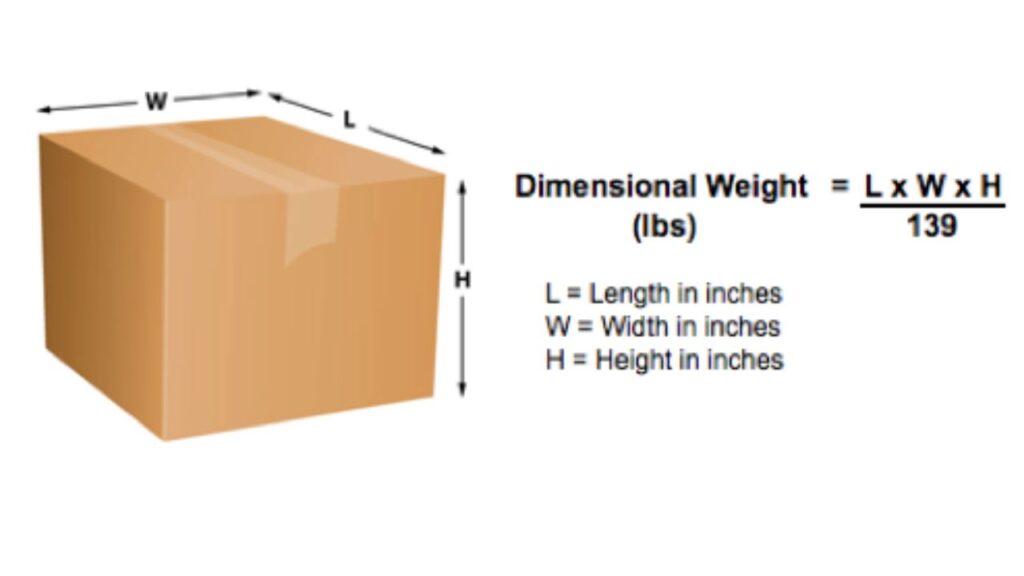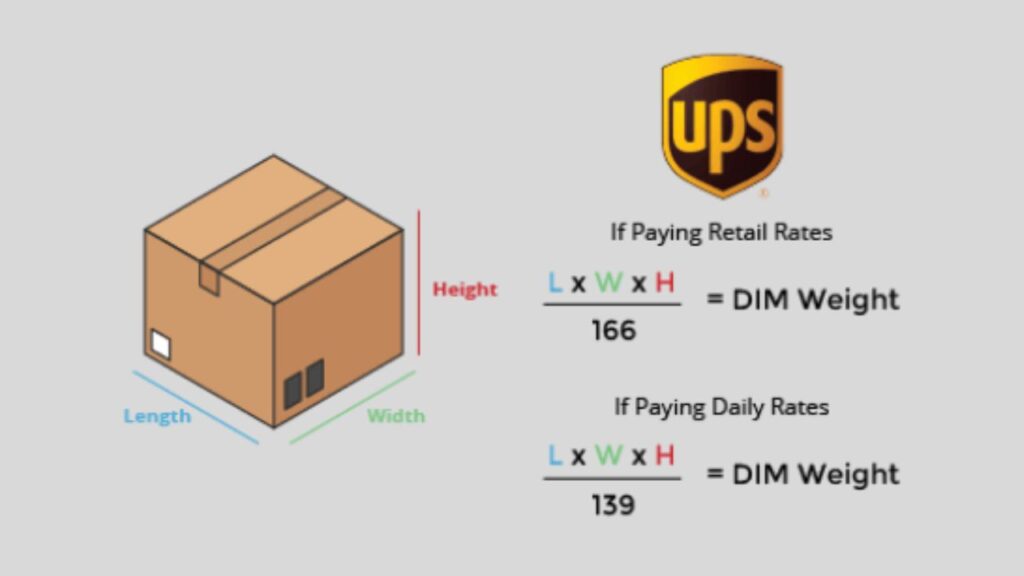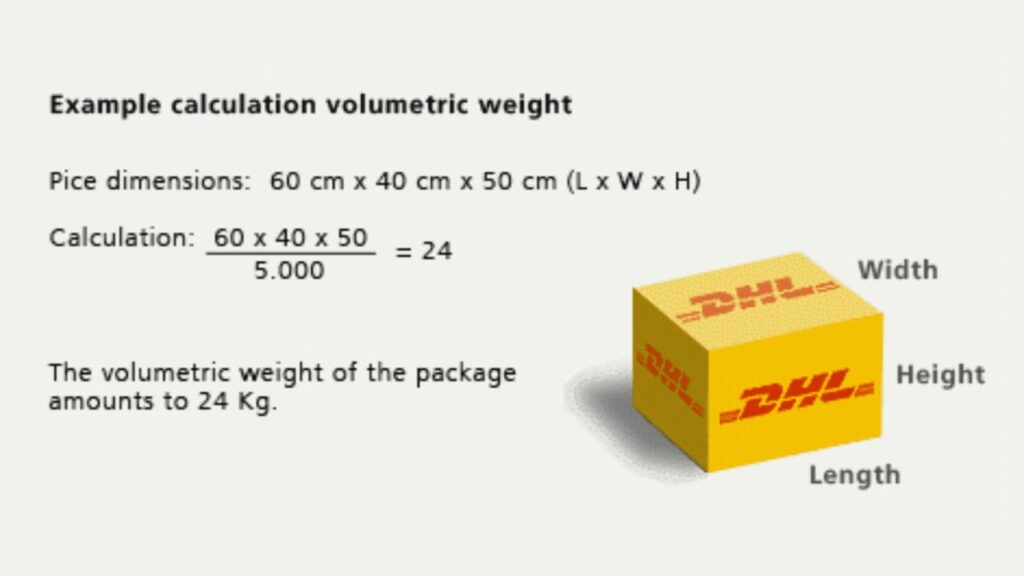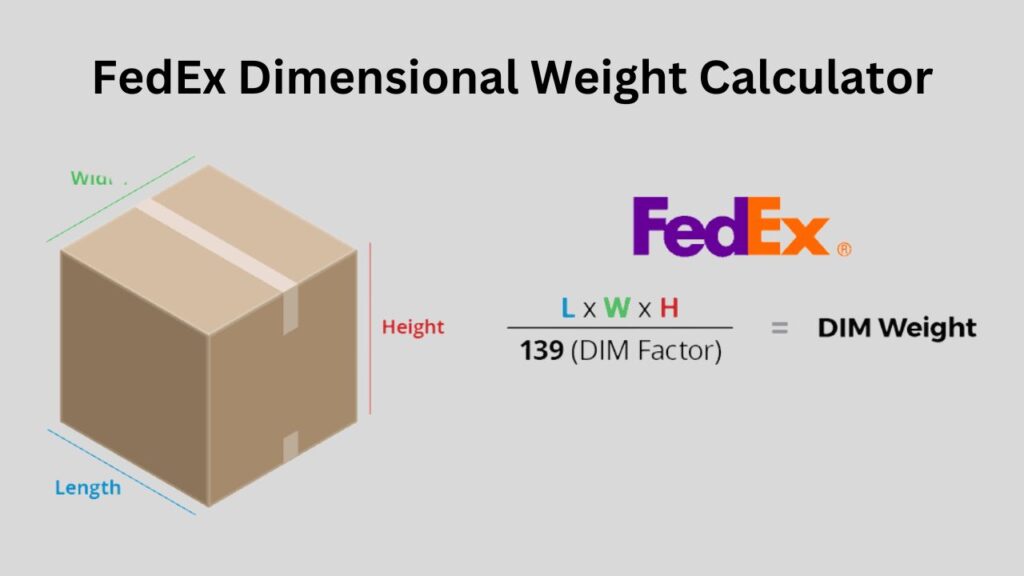We have another article talking about chargeable weight.
Dimensional weight pricing is a method that allows freight carriers to charge shipping rates based on the package dimensions instead of its actual weight. Charging fees by weight overlooks the effect of light packages in weight but bigger in large.
More packages such as those take up more space on the shipping vessel or the delivery truck. Keep reading to learn more about dimensional weight, how to calculate it, FedEx dim factor 2019, and more!
What Is Dimensional Weight?

Dimensional weight—also called DIM weight—is the formula postal service companies and shipping companies use to identify shipping costs based on the freight’s volume. It can lead to large, lightweight packages costing more to ship than small, bulky parcels.
Before 2015, many major carriers considered the package’s actual weight and the distance required to travel to calculate the shipping cost. Since then, they’ve switched to using either dimensional weight or the higher of the two numbers.
The reason for that switch was to support customers in cutting down on the unnecessary big package to save storage space. In the past, a lightweight package in a big box would cost the same as a small, lightweight item in a small box, even though the former took up a larger amount of valuable space.
How To Calculate the Dimensional Weight?

The formula behind dimensional weight (DIM weight) is rather easy. Begin by calculating the cubic size of the packages. Multiply the length by width by height, make that total, and divide it by 139 (the dimensional divisor that FedEx and UPS determine).
If the resulting DIM weight is higher than the actual package weight, your dimensional weight becomes the weight you will be rated on—otherwise called the billable weight.
For instance, let’s say you have 12 x 12 x 12 lightweight items. The DIM weight will be 12 pounds. Therefore, if you are shipping 15 pounds of books, your package will be rated based on its DIM or actual weight of 15 pounds.
Nonetheless, if you are shipping 5 pounds of ping pong balls, your business package will be rated based on the DIM weight of 12 pounds since it is the higher weight.
FedEx Dimensional Weight Calculator
FedEx dimensional weight divisor factor varies based on the package’s weight and length. This FedEx dimensional weight pricing calculator uses two formulas:
If you choose the FedEx dim weight of inches per pound, the DIM factor would be 139.
DIM weight = (L x W x H)/139
If your unit of choice is centimeters per kilogram, the formula you must use is DIM weight = (L x W x H)/5000.
UPS Dimensional Weight Calculator

UPS utilizes two-dimensional factors. Which one they will use to charge your packages will depend on how you use their service. Daily rates are for people with scheduled pickup and a UPS agreement.
Retail rates are for you if you ship from a UPS store or a UPS Customer Center and do it infrequently. This UPS calculator uses the following DIM weight formula:
· For daily rates: DIM weight = (L x W X H)/139
· For retail rates: DIM weight = (L x W x H)/166
You’ll also find a more dimensional factor utilized in nations that utilize centimeters than inches.
· DIM weight = (L x W x H) / 5000
It’s vital to check the weight and size restrictions before choosing the shipping company to use. FedEx ships package up to 150 pounds or 70 kilograms.
DHL Dimensional Weight Calculator

Use pounds and inches to get the DIM weight for a DHL export. Multiply by the package's length, width, and height in inches and divide that total by 139. Round up the next whole number, and you’ll have the dim weight in pounds.
FedEx Dimensional Weight Calculator

Use pounds and inches to get the DIM weight for a FEDEX export. Multiply by the package's length, width, and height in inches and divide that total by 139. Round up the next whole number, and you’ll have the dim weight in pounds.
If size in centimeter, then the FedEx dimensional weight calculate formula = Length*width*height/5000
Tips To Lower Dimensional Weight Price

One of the most crucial things you must do to lower your DIM weight shipping costs is to use the right packaging sizes. You must consider the size of your international shipments and how fragile they are.
Packages at a higher risk of damage will require more cushioning, consuming more space. Try to find a package that allows sufficient room for the required cushioning but more. The smaller you can make the package while keeping the item safe, the better.
Here are more tips you must keep in mind.
1. Determine the weight of your current packaging
Calculate the actual and DIM weight of your packaging and products, especially those lightweight but large packages. If the Dimensional weight is higher than the actual weight, you must identify how to fit the package in a smaller container or create a new packaging configuration.
2. Determine if poly bags are a much better option
The issue with rigid containers is that it’s often challenging to fit a product or multiple products without wasting space.
On the other hand, poly bags can offer similar package levels of protection while being lighter weight and making less void space by confirming the products with them. Those can help you lessen both actual weight and DIM weight.
3. Consider the new packaging technology
You will find different technologies that could keep dimensional weight under control. The first option is automated packaging machines. Unlike manual package that is subject to human error, machines will effectively fill boxes or bags consistently and completely, minimizing the chance of unnecessary void space in the package that may cost you more money.
Also, there’s software that will determine the optimal package size based on your package's durability, weight, and dimensions. That software helps guarantee you are only utilizing as much package as is needed for the item.
Conclusion
Overall, dimensional weight pricing is a method utilized by large shipping companies such as UPS and FedEx to weigh a package based on its box size instead of its physical weight or actual weight.
Therefore, if you are shipping lightweight but bulky packages (for example, packages containing stuffed toys, pillows, or lampshades), you can expect to be charged a higher shipping fee if the freight carrier utilizes DIM weight pricing.
We hope you find this guide informative and useful at the same time. If you have more questions about Dimensional weight and need help calculating your shipments' chargeable weight. Contact us and Send inquiries directly.

